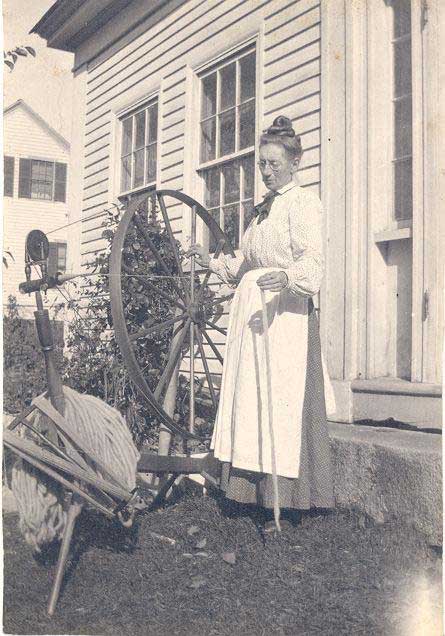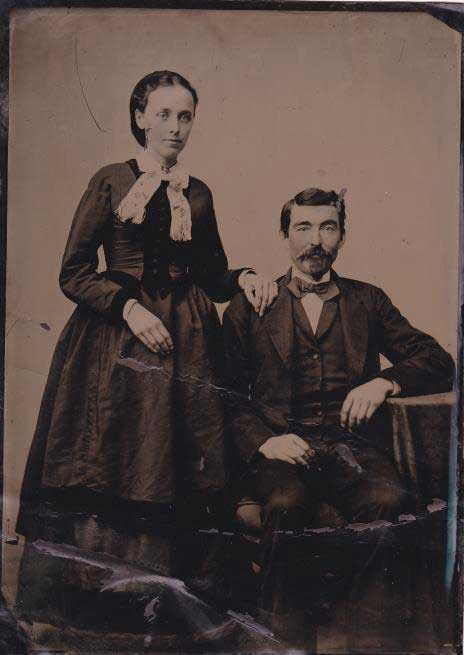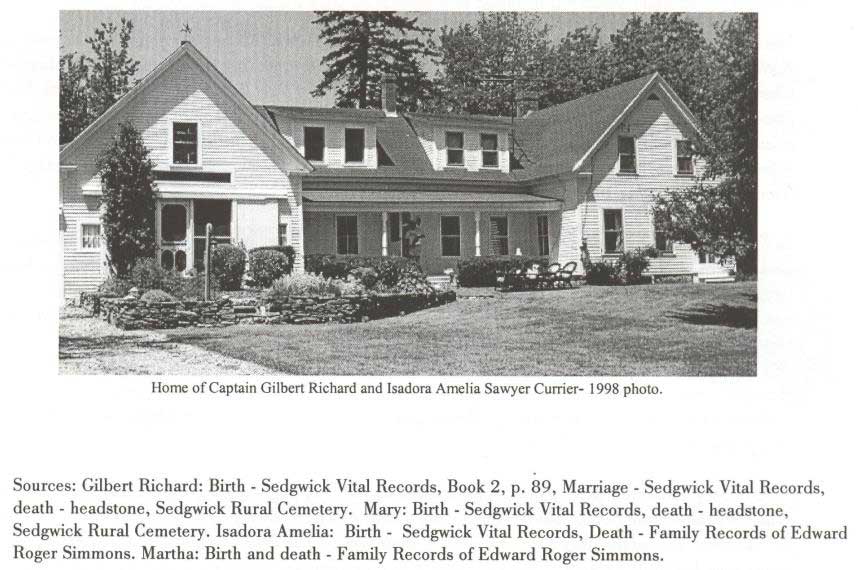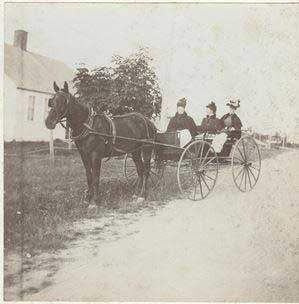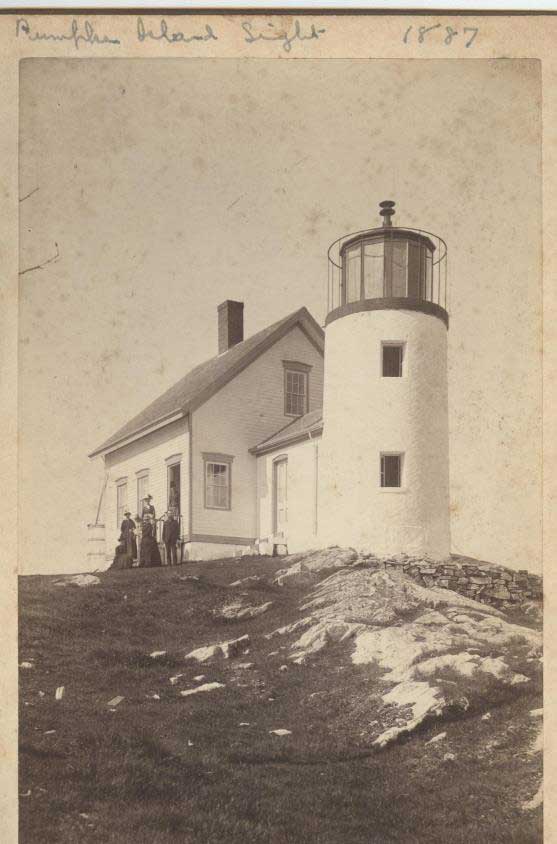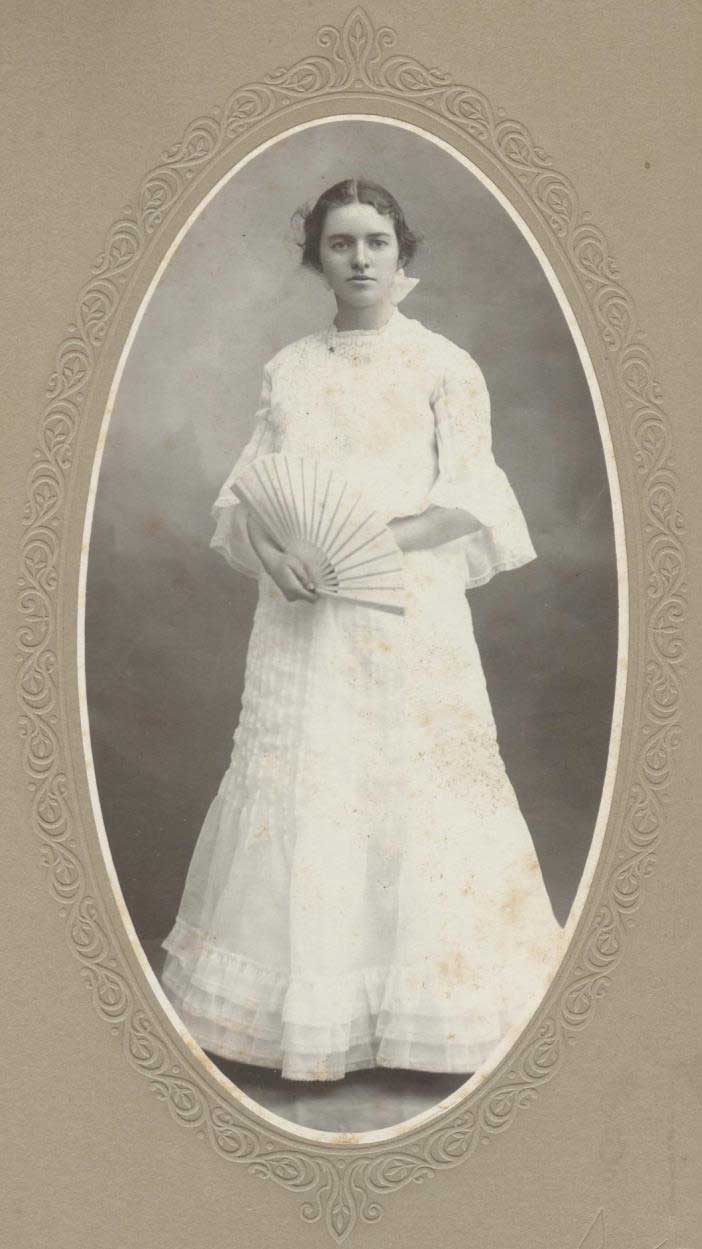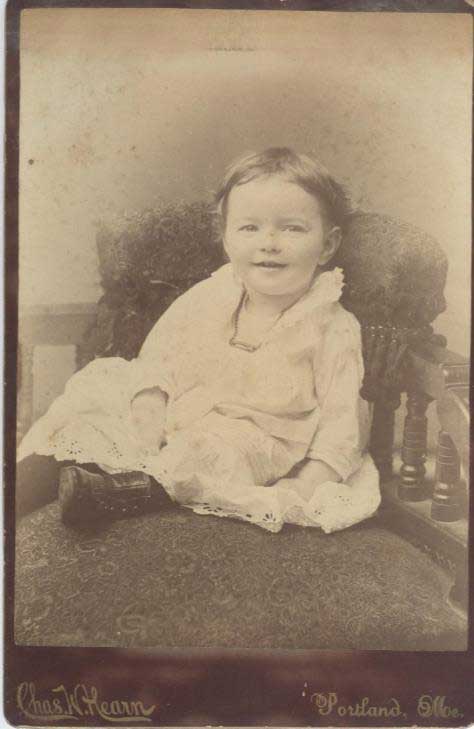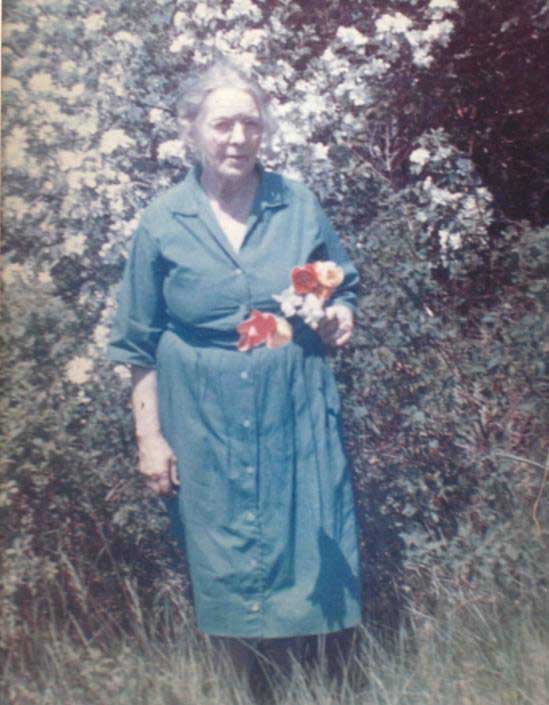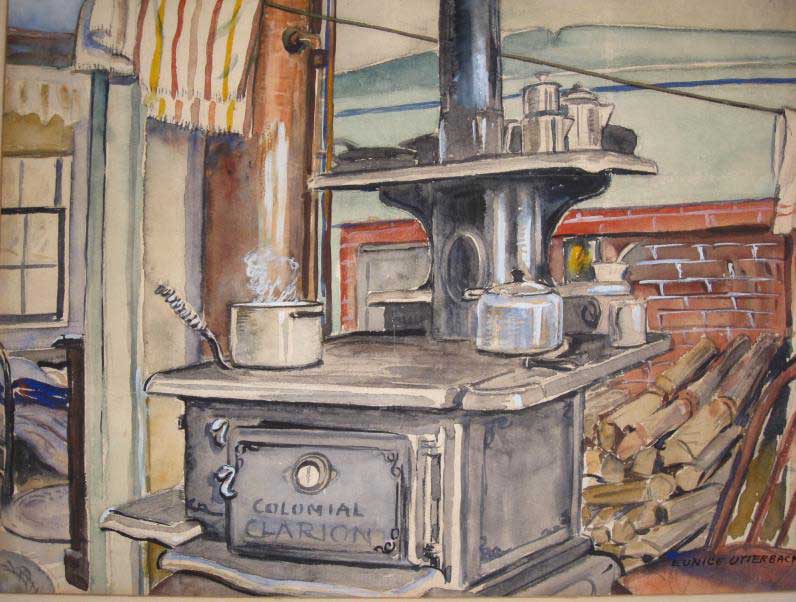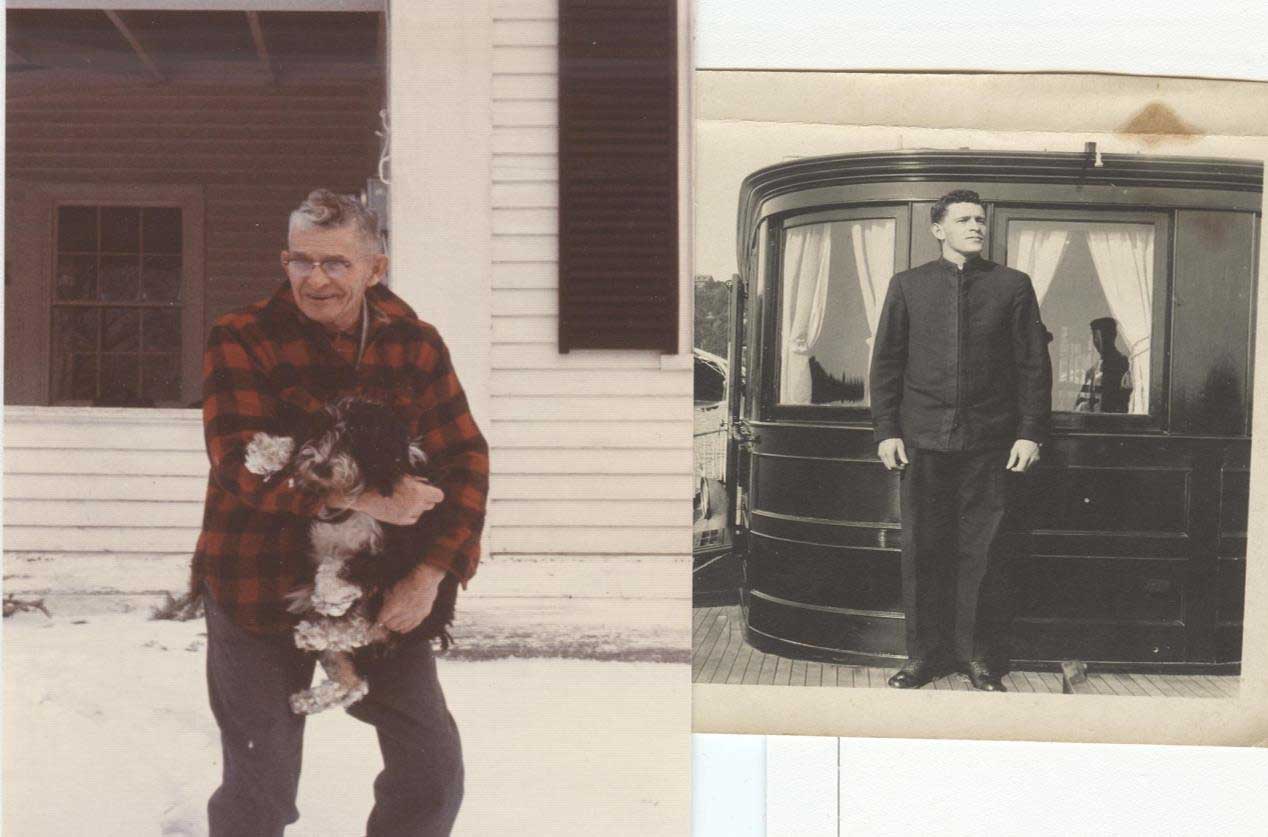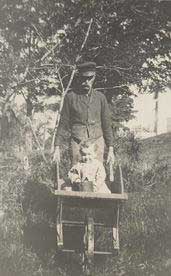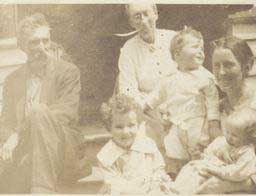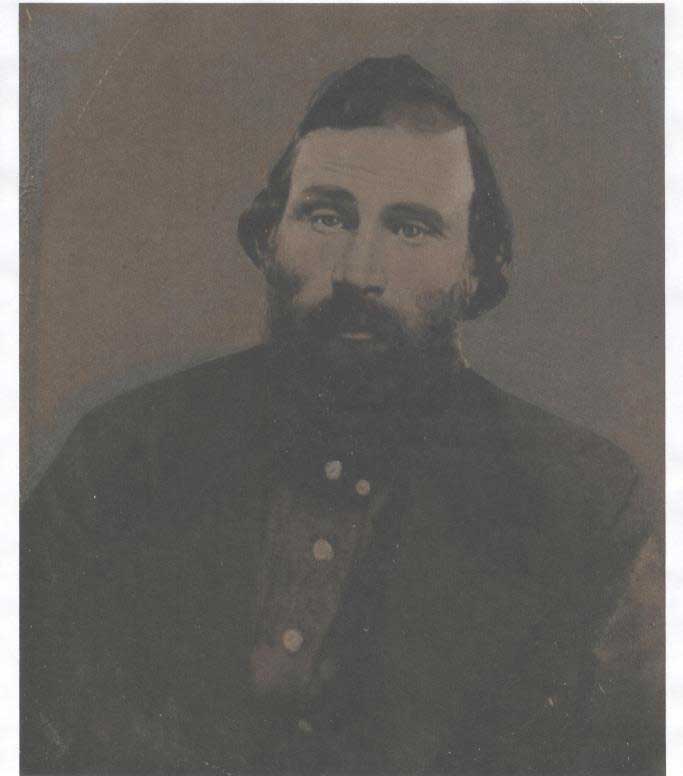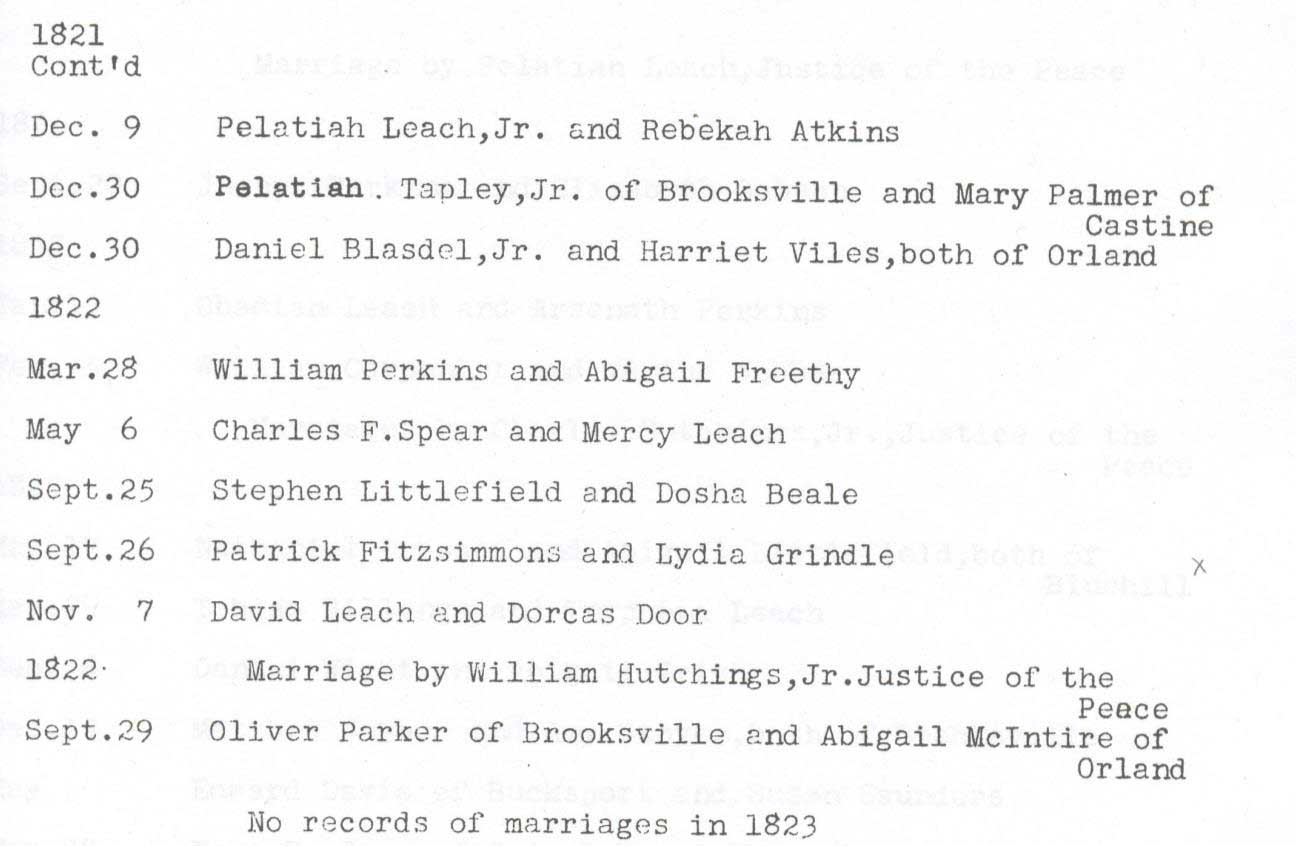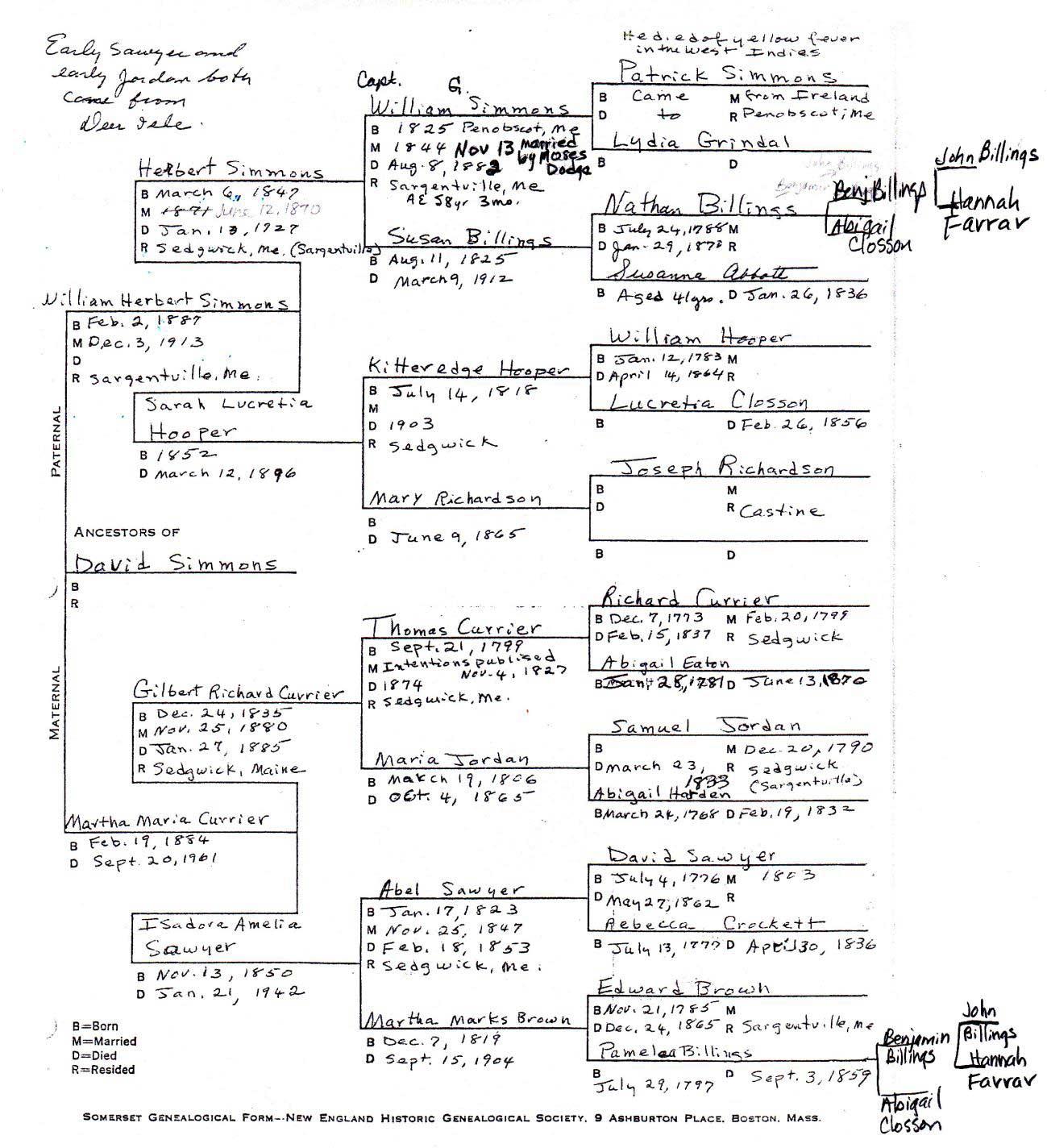Abel Sawyer’s Family
Abel’s father, David Sawyer (born July 4, 1775, Newburyport, MA, died May 27, 1862, Deer Isle, Me.) who had moved to Deer Isle from Newburyport, MA, was a 6th generation descendent of William Sawyer8 who was born in England about 1613 and “was living in Salem, MA in 1640 having arrived in America four years earlier with his brothers Edward and Thomas.” 9
According to George Hosmer, a Deer Isle historian, David Sawyer “was by trade a house and ship joiner. In the latter business he had a good deal of practice and was a very good workman. …The wife of Mr. Sawyer died not far from the year 1838, and he survived her twenty years or more. By the death of a brother in Groveland, Massachusetts, he came into possession of about ten thousand dollars, and at his death it was divided among his children. Mr. Sawyer was one of the most singular men I ever saw. He possessed an extraordinary memory, was a great reader, and, of course, possessed a great deal of information, for he retained what he read. A good mechanic, an honest man in his dealings, his word was good, for whatever he promised he performed“.10
The ten thousand dollars inheritance money mentioned by Hosmer was of interest because when it was divided amongst David Sawyer’s children an equal portion went to Isadora (“Dora”) Amelia Sawyer, the daughter of David’s deceased (1850) son Abel. Dora would have been about 12 years old when her grandfather died and it seems likely that this was the source of some of the money Dora used to finish off the upstairs in their house and, later, to buy land from Lydia Gower and others. This possible source of money was not known to Patty Garroway who said she always assumed Dora’s money came from her deceased husband Gilbert Richard Currier.
Abel’s mother Rebecca Crockett (b. 1783 d. 29 Apr 1837 m. 2 Mar 1804 Deer Isle ME., David Sawyer) was the daughter of Captain Robinson Crockett who came to Deer Isle in 1785. Prior to his arrival Captain Crockett was a master-mariner sailing from Falmouth, Mass. 11
Abel’s brothers and sisters were:
Nathan Wheeler, 1805-1881 (buried at Mount Warren, Deer Isle),
Admiral George, 1806-1891 (buried at Mount Warren, Deer Isle),
David 1808-1884,
Mary W., b. 19 Nov 1810, d. 7 Sept 1874, m. 8 Oct 1839 Ezekiel Marshall,
Rebecca, b. 19 Nov. 1810, died young,
Rebecca Noyes, b. 5 Feb 1813, m. 29 May 1838 Samuel G. Barbour,
Mark Haskell, 1815-1890,
Abigail, b. 11 Jan 1819, m. 1844 James G. Bray,
Fanny, b. 12 May 1821, m. 1844 Mark H. Bray.
Notes about Abel Sawyer:
- Information about Abel Sawyer’s grandparents:
Parents of David Sawyer (b.4 Jul, 1775, Newburyport MA. D. 27 May 1862) were:
Abel Sawyer b. 9 Jan 1744 Newbury MA, d.12 Feb 1821 Alfred Maine, m. 8 May 1763 Newbury Mass. Sarah Wheeler, b. 24 May 1741. B/S/land in Maine, 1768-1800. Abel’s siblings: Sarah, b. 22 Mar 1764, d. 13 Jul 1849, m. 22 Dec 1785 Moses Cheney., Nathan Wheeler, b. 22 Feb 1767 Newbury MA. , Abel, b. 1771, David, 1775-1863. (Sawyer p.26) - The following is another of the “Sawyer Scraps” from the Deer Isle-Stonington Historical Society records (p. 146). It is of interest because it includes the town in England where our Sawyer line originated:
“(Extracted from Vol. 4, issue of 1889, Munsell’s American Ancestry)
- John Sawyer of England had at least three sons; Thomas, William and Edward.
- Thomas Sawyer son of above was born in Lincolnshire, England about 1618, d. at Lancaster, Sept.12, 1706. He came to America 1636, with his brothers, William and Edward, settled at Rowley Mass., moved to Lancaster 1647, was one of the first five successful settlers of Lancaster, one of the first “prudential men” 1753, held various town offices, after Lancaster was burned by the Indians in 1676 and abandoned for three years, it was rebuilt by the Prescotts, Sawyers, Houghtons, Wilders and others. He married Mary Prescott, daughter of John and Mary (Platts) Prescott.
The descendent of this family further is down through Thomas of Lancaster, Mass. through his son Thomas, Jr. in Lancaster in 1649, and the sketch is a very interesting one. The William Sawyer mentioned above as identified with Rowley, Mass, could be the William Sawyer of Newbury, Mass, b. about 1613, through which it is supposed the Deer Isle Sawyers descended.”(DISHS)
- Again from the “DISHS Sawyer scraps”
“ The estate left by Mr. Sawyer was considerable as will be found in the Hancock Probate Records, Vol. 37, pages 466 (Will) and 467 (probation), an abstract of which is as follows:
Will of David Sawyer of Deer Isle
“to beloved children Nathan W., Admiral G., David Jr., Mary, the wife of Ezekiel Marshall, Rebecca, the wife of Samuel Barbour—H., Abigail the wife of James Bray, Fanny the wife of Mark H. Bray, also to Isadora Sawyer, daughter of Abel Sawyer, my son (deceased) everything, real, personal and mixed to be equally divided, …
Signed David Sawyer Aug. 3, 1861
Witnesses Thomas Warren, James Robbins, John Foster
Probated 1st Wed. Aug 1862 by Admiral G. Sawyer
David and Rebecca Sawyer are buried in the old cemetery in Deer Isle and the specific site has been identified by researchers at the DISHS. (Appendix 2)
Isadora Amelia Sawyer (“Dora”),
Abel and Martha’s daughter Dora, was an intelligent and industrious woman who was very involved in the Sargentville Library, the Chapel and her community. Dora married Gilbert Richard Currier (b. 24 Dec 1835, d. 27 Jan 1885) (called Richard) on 25 Nov 1880 and in 1884 their only child, a daughter, Martha Maria Currier, was born. Dora and Richard lived in their own home on Reach Road during the five years of their marriage but upon his death she returned to her childhood Sawyer home. In the late 1880s Dora worked as the tutor to the children of the Pumpkin Island Lighthouse keeper, Charles Babson and his wife Georgianna. She seems to have enjoyed the work but it was hard for her to be away from her young daughter. In time she returned home but she remained lifelong friends with Captain and Mrs. Babson.
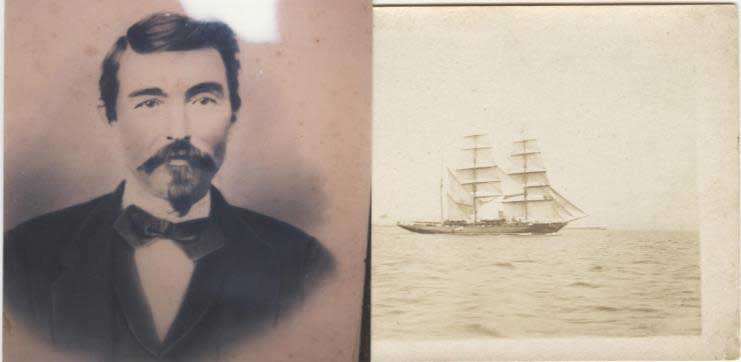
Captain Richard Currier and a schooner similar to the James A. Crooker. A member of the Currier family who were long time residents of Sedgwick, Richard was captain and part owner of the schooner James A. Crooker which transported freight such as wood and granite along the New England coast. Richard was first married to Mary Volusia Hooper, born 28 May 1850, but she died of tuberculosis at the age of 24. Richard was 50 years old when he too died of tuberculosis.
When Dora’s mother, Martha Brown Sawyer, died on September 15, 1904 the Sawyer house became hers and over the years she expanded the property by buying land as it became available, usually an acre at a time. Thus the property grew from 1/2 acre to over 27. Later, when her daughter Martha Maria married, Dora played a big role in delivering and caring for her grandchildren when their father was away at sea or working out of the area. The children called her Nana (pronounced ney-na) and each of them said she was a very important part of their lives.
Dora kept daily journals from 1914 until mid-1940, a few months before her death on 21 Jan 1941. The journals tell of the births, deaths, tribulations and activities of daily living in her home and in the town. As you read her words, her love for her family and friends is palpable as are the difficulties faced when babies died, the children became ill or when the well went dry!
Martha Maria Currier, Dora and Richard Currier’s daughter, named after her two grandmothers, was a beautiful and intelligent young woman.
She spent her high school years in Bridgton, ME. with her aunt Izora Devereaux Currier Shorey and uncle, Major Henry Augustus Shorey and graduated as valedictorian of her class. The Shorey’s daughter Zoe was about Martha’s age and they were good friends.
After high school Martha returned to Sargentville where she resided in the family home until her death in 1961 in Blue Hill Hospital of heart failure following a heart attack.
Martha married William Herbert Simmons on December 3, 1913 and gave birth at home to 9 children. Two of them Margaret and Rebecca, who was said to have had “acute enterocolitis”, died within days of their birth.
During most of her married life Will was away for extended periods on ships or at other work but Martha was quite self-sufficient and also got constant help and support from her mother Dora.
Martha’s life was filled with family, friends, community activities and the day to day tasks of that went with living in a house built before the days of electricity, telephones, central heating or indoor plumbing.
Originally the only heat sources in the Sawyer house were the fireplaces in the kitchen, dining room and living room-though the one in the dining room was never used because it didn’t draw well (conversation with Pat Garroway). However, shortly after the house was built a black cast-iron Clarion stove was installed in the kitchen and from that time until about 1968, when David Simmons installed a furnace in the cellar, it was a main source of heat in the house.
At night, before heading up to bed, Martha would bank the Clarion stove with coal. She then would be up at 5am at which time she would stoke the fire with white pine kindling and start cooking or just warming things up. She could cook anything in or on that stove and all her grandkids were particularly fond of her peanut butter cookies.
Quite self-sufficient, Martha and her mother had a garden where they planted vegetables such as peas and beans, and greens such as dandelions and radishes. They also raised chickens, geese, a cow or two and usually a pig that they bought in the spring and killed around Thanksgiving. These foods plus fish from the Reach and an occasional rabbit or deer made up most of the foods in the family diet. Any extra was dried or canned for later use, so much so that Will once told Abby Sargent, “Martha canned everything except snowballs.”
Martha’s community involvement included nearly a lifetime role as librarian at the Sargentville library. Rain, snow or sleet she was there to welcome visitors every Saturday and on a weekday evening during the summer months. Too, in 1941, when membership in the Thursday Club dropped Martha stepped in and revitalized the group in their effort to raise money to help those less fortunate and with other community needs. She was the very active president of the Club for thirteen years, until her death in 1961.
William Herbert Simmons
Martha married William Herbert Simmons on 03 Dec 1913. William, called Will by his wife and many friends, was born in Sargentville on 02 Feb 1887. It has been said that he was called “Wild Bill” while he away working on steamboats and I’ll bet there’s a story or two that go with that moniker. In April 1915 he was the assistant engineer on the steam yacht Wanderer (according to David A. Simmons) owned by George Whitney. At another time he worked on the steam yacht Actus. Later he worked many different jobs to support his growing family and often headed off to Boston to find work. He cut ice on Walker’s Pond and for Mr. Foster in New Jersey, worked in a corn canning factory in Vermont, fished, cut wood, did repair work, was for a time the Chief Engineer on the Rose Standish, a Narragansett Line steamer out of Nantasket Beach, MA., and in his later working years, was Chief Engineer on other steamships out of Nantasket Beach. Dora’s journals reflect how hard it was having him gone so much, but many of the men in town found this the only way to earn enough to support their families. After he retired from the sea, he and Martha were the caretakers for many of the summer homes in town and he and his friend Scott Lymeburner kept busy painting and repairing many of the large summer homes down by the Punchbowl and in other parts of town.
William’s father, Herbert Simmons, son of William Grindel Simmons and Susan Billings, was born 3 Mar 1847 in Sargentville. During his life he was very involved with his family and was a great help to Martha and Dora as they dealt with day-to-day maintenance of the house and farm. Pat Garroway said that for some time before the Deer Isle Bridge was built he ran the car ferry between Sedgwick and Deer Isle. Prior to the advent of autos he also rowed people back and forth.
Mysteriously, there is a cancelled divorce proceeding between Herbert and his wife Sarah Lucretia Hooper on record in the Maine Divorce Archives. At some point the proceeding was halted and when asked about it, Pat Garroway was surprised to hear of it. She said that Herbert was very close to his wife and had actually quit his ferry job to take care of Sarah when her health began to fail.
Herbert resided in the Sailor’s Snug Harbor Retirement Home in Staten Island, New York at the time of his death 13 Jan 1927. His son William brought his body back to Sargentville where he was buried on 17 Jan 1927 in Forest Home Cemetery.
William’s grandfather, Herbert’s dad, was Captain William Grindel Simmons the son of Patrick Fitzsimmons and Lydia Grindal. Like many other Sedgwick men he was the Captain on one or more of the many schooners that moved lumber, granite, ice and supplies of every sort up and down the coast of New England.
William Grindel Simmons’ middle name with the spelling noted comes from a handwritten family tree in the possession of Pat Simmons Garroway. The likely source of the information is extensive genealogic work done by Eugenia Sally Brown from Georgia who owned “The House By the Side of The Road”, a home across the road from the Billings homestead.
William Herbert Simmons’ great grandfather was Patrick Fitzsimmons.
Patrick, the ancestor of the Simmons side of the family in Sedgwick, is a bit of a shadowy figure. Tradition has it that he was an Irish conscript soldier on one of the English ships involved in the attack on Castine, ME. in 1814 during the War of 1812. (Appendix 3) He purportedly jumped ship and later married Lydia Grindle of Penobscot. He or his children changed the name to Simmons and that is the origin of the Simmons name in Sedgwick, Maine. Pat Garroway believes that Patrick eventually died in the West Indies of yellow fever.
There is no proof that Patrick was ever a soldier and the tale may be a romanticization of his entry into America but we do know from the Penobscot, Maine marriage records that Patrick Fitzsimmons and Lydia, age 16, were married by Charles Hutchings, Jr., Justice of the Peace on 26 September 1822.12 Their intentions to marry were posted 11 Aug. 1922. 13
Lydia’s birth had not been officially recorded but her existence was identified by Mrs. Hattie Grindle who said she was one of the 17 children of William Grindle who was born 8 May 1749, died 21 Jan 1820, and his wife Eunice Howard born abt. 1761, died 1864. It is believed that Lydia was their 14th child born about 1806 probably in Penobscot.14
Patrick and Lydia’s children were William Grindel Simmons born about 1823-25 and Mary Anne Simmons who was born about 1826, married Joab Gray Snow (1821-1870) and died at age 84 before the summer of 1910.15
______________________________
8 Sawyer, Eleanor, Sawyer Families of New England 1636-1900, Penobscot Press, Camden, ME., 1995, Page 45.
9 Ibid, page 11.
10 Hosmer, George, An Historical Sketch of the Town of Deer Isle, Maine, Press of Stanley and Usher, Boston, MA. 1886, page 157-158.
11 Hosmer, page 109.
12Vital Statistics copied from Town Records, Penobscot, Maine, 1787, date of incorporation to 1875, Brooksville Historical Society, North Brooksville, Maine 1940. Page 66.
13 Ibid, page 16.
14 Snow, Walter A. et al., The Grindle Family of Hancock County, Maine, 1978, pages 135, 136.
15 Ibid, page 134.
APPENDICES
Appendix 2-gravesites of David and Rebecca Sawyer
Appendix 3
Patrick Fitzsimmons
Questions and information compiled by Pam Simmons regarding Patrick Fitzsimmons’ possible link to the British Army during the War of 1812
If you are looking for a challenge, see if you can find any record of Patrick Fitzsimmons in the English Military files, or anywhere else. Was he really a conscript soldier with the British who jumped ship in Castine, or is it just a romantic way to explain his sudden appearance on the Penobscot social scene?
In a June 2012 meeting with Paige Lilly, curator at the Castine Historical Society, I learned that extensive records of the British engagement at Castine do exist in the Archives in Halifax, Nova Scotia, where resided the command center for the British fighting the War of 1812. I have not yet investigated those records but many include detailed lists, by name, of British troops.
In The History of Maine by John S. C. Abbott, Brown, Thurston Co., Augusta, Maine 1892 (pp. 418-422) on page 421 the author describes the fleet of gunships, et al. that attacked Castine (then called Penobscot) on September 1st, 1814. In the footnote he says, “It is certain that the forces consisted of the Sixty-second and Ninety-eighth Regiments, two rifle companies of the Sixtieth Regiment, and a detachment of royal artillery.” Perhaps English military records exist somewhere that list Patrick Fitzsimmons as a member of those attack forces.
David Anderson, a genealogy enthusiast in Sargentville, ME. sent the following email comments to me: The following are the “Notes” for Patrick in the Sedgwick Family Tree file I sent you.
“Almost nothing is known about Patrick. His name comes from his marriage record, which is the only record we have for him. Either he or his children changed the name to Simmons. The Grindle Family genealogy says “According to tradition, he was a deserter from the British at Castine, War of 1812”. He appears in no census records, nor in the probate index for Hancock Co. The following quote is from The Snow Genealogy, compiled by Walter A. Snow (1980): It refers to an interview of Joseph Thomas Snow by B. Lake Noyes about 1828:
“Joab Gray Snow, father of the informant, married Mary Ann Simmons, b. Penobscot, Me, daughter of Patrick Simmons, who ran away from the English Army. The name was originally Fitzsimmons when Pat was pressed into the English Service. He changed it when he deserted at Castine.” (War of 1812).
David Anderson’s comments continue:
The “notes” have everything I’ve been able to discover about Patrick. If he was indeed “pressed” into the British Military, as asserted supposedly by his daughter Mary Ann, then I suspect there is no British record of him. But the Note from Joab Snow’s son is not all accurate anyway, since we know that the marriage record says Fitzsimmons, so strictly speaking he did not change it when he “deserted”, but rather long afterwards. That makes no sense, if he changed it to hide from the British. My own suspicion is that he changed it, not because of potential problems with the British, but because this area was settled almost entirely by people of English descent, and the prejudice against the Irish ran very high. There are records of the bad treatment of the Irish in Bangor. You would not fool a British deserter-searcher by dropping the Fitz, it’s probably the first thing they would look for. But you could live ok among the English with Simmons. I forget where I read that he died of yellow fever in the West Indies, it’s in one of the pubs, and I don’t know why I didn’t put that claim in the “Notes”. It’s certainly not unreasonable, if he was shipping out.
Did it ever strike you as odd, though, that Patrick supposedly escaped the British around 1814, yet didn’t marry Lydia until 1822? Where did that story come from in the first place? Does it have any kind of merit, or does it simply fill a vacuum that people don’t like to leave empty?
Of course any time someone writes that something is certain without giving reasons or evidence, I am naturally skeptical. So I’d probably start by confirming what British units were in fact engaged.

